Botrytis fruit rot, also called gray mold, is a common problem for both home and commercial growers when growing strawberries. It can destroy an entire harvest left unchecked.
Sometimes you don’t even know your plant is infected until it’s way too late to do anything.
Keep reading to learn more about Botrytis fruit rot and how to save your strawberries from this all-too-common disease.
What Is Botrytis Fruit Rot?
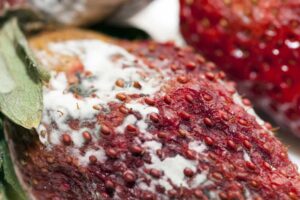
To find the proper treatment for botrytis fruit rot, you need to understand the disease and how it spreads.
It’s most active when the weather is cool and wet, but it might be present, hiding dormant, even when the conditions aren’t ideal. That’s why you need to be aware of the symptoms that might appear early on in the growing process.
Some strands of Botrytis cinerea are more challenging to treat than others because they’ve become resistant to fungicides, but the symptoms are the same.
The first symptoms usually show within two-four weeks of infection, or the fungi might go dormant and re-emerge as the fruit starts to mature.
Symptoms include small, light brown spots that grow and merge. These can eventually cover the entire fruit. If the disease is untreated, the dark spots will develop a gray mold coating.
If you start to see spots, examine the fruit’s stem. You might see light brown lesions forming there.
Once gray mold starts to develop, it can also infect nearby fruit on strawberries or other species. That’s why you need to act quickly if you see symptoms.
The Lifespan of Botrytis Rot
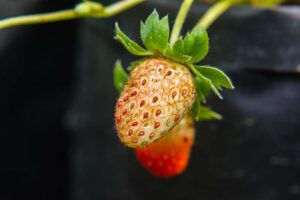
The disease can lay dormant on the leaves before showing apparent symptoms. It can also produce growths called sclerotia, which can survive in the soil for years, even when strawberries aren’t present. Sclerotia acts as a food storage for the fungus.
That means you can reinfect plants years down the road. And since Botrytis can live on many other species, not just strawberries, it can find alternate hosts.
This disease can also lay dormant for a while before showing signs. It might infect plants in the early spring, hang out with no symptoms during the summer, and “suddenly” appear in the fall.
As we mentioned, the fungus needs cool conditions, between 65-75°F, to grow, spread, and reproduce. It also needs moisture. High humidity, lots of rain, and over-irrigating all contribute to the spread of this disease.
Preventing Botrytis Fruit Rot
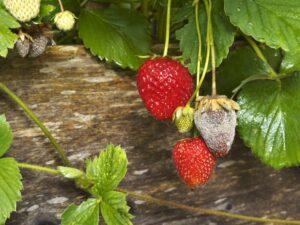
It can be challenging to tackle the Botrytis fungi because it has different strands. One might be resistant to common fungicides in your area, and one might be adapted to drier conditions than another.
You should start by changing the growing conditions to see if you can treat the disease without applying chemicals.
A fungicide can impact the quality of the soil and can create resistant fungi, so it’s smart to try to treat the disease without chemicals to start.
Here are some tactics to try:
1. Limit Nitrogen
Studies show that nitrogen can increase the presence of fungi like Botrytis. This is because nitrogen causes an abundance of leaf growth, which reduces air circulation. When the weather gets cold and wet, the conditions are perfect for gray mold to take over.
Limit nitrogen use during the growing season and monitor the quantity of the leaves. Test your soil before fertilizing to ensure you aren’t adding too much of something your soil doesn’t need.
2. Increase Air Circulation
Space multiple strawberry plants well apart to increase air circulation. Most cultivars should be about 18 inches apart. Plant strawberries in raised beds can also increase air circulation.
To prevent high moisture levels, add extra mulch to the top layer of soil to ensure moisture doesn’t get trapped.
3. Plant in Full Sun

Strawberry plants need full sun to grow well. Pick a spot in your backyard that’s not shaded by walls or other plants. Sunnier spots help any excess moisture to dry out more rapidly.
4. Control Weeds

Weeds can cause problems for strawberry plants. Remove them from your gardens. Don’t just hand-pick them or cut them with scissors. You must dig up the entire weed so you remove the roots. Otherwise, the weeds will grow back again.
Mulch is also an effective method for minimizing weeds, with the added bonus of helping moisture remain in the soil so you don’t have to water as often.
5. Remove Damaged Fruit and Leaves

Not only is it important to remove weeds, but you must also remove any damaged fruit or leaves. Removing dead tissue will help protect the fruit from exposure to Botrytis fungi, since the disease gets in through damaged areas.
Check and remove the damaged parts daily. You should also avoid damaging fruit when mowing, weeding, or trimming near the plants.
6. Harvest Strawberry Fruit Regularly
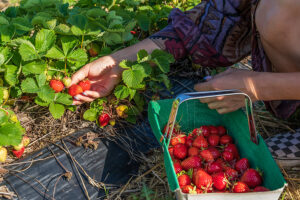
Harvesting your strawberries as soon as they are ripe will limit the continual spread of the mold. The harvesting season usually only lasts 3-4 weeks, so you don’t have to be vigilant for too long.
You usually know a strawberry is ready to pick when the fruit is a vibrant red. Strawberries are delicate, so be careful when picking them. The easiest way to pick the fruit is to remove them with your fingers.
A simple pull should remove the berry, and then you can place them into a container or bag. Or you can clip off the stem. Remember not to put too many strawberries in a small box as it will cause them to bruise.
If you notice any mold, throw the infected berries away and keep the healthy fruit. Be careful not to pick unripe strawberries that are still pale and hard.
7. Water Appropriately
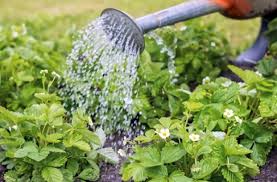
Remember, this fungus needs moisture to spread. That’s why you need to do your best to prevent strawberries from getting and staying wet.
Straw mulch below the plants can help reduce splashing, and you should always water at the soil level, not on the leaves. Keep plants well-spaced to improve air circulation and water in the morning so the moisture can evaporate quickly.
Chemical Treatment Options
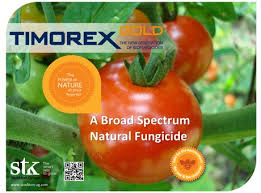
If all the above fails, fungicides are the next best solution for Botrytis fruit rot. It’s a complex disease to manage and requires a careful treatment plant.
Apply the treatment when the fruit first starts growing. You might need to try a few different products before you find one that adequately controls the disease.
In some areas, you can request a test of the Botrytis fungi in your local agricultural office to find out what will be most effective in treating it.
Botrytis cinerea is resistant to the following fungicides: pyraclostrobin, iprodione, and fenhexamid.
If you spray your strawberry plant in the early stages of growth and again in the harvesting season, you should be able to stop the disease from developing further.
Biofungicides

Biofungicides are an excellent way to treat Botrytis rot because they’re effective and less damaging to the surrounding environment.
Here are some biofungicides that are suitable for Botrytis fruit rot:
- Bacillus amyloliquefaciens – a beneficial bacteria in products such as Bonide’s Revitalize
- Trichoderma harzianum – a beneficial fungus in products like BioWorks Rootshield Plus WP
- Streptomyces lydicus – a beneficial bacteria common in fungicides
- Bacillus subtilis – a beneficial bacteria in products like Cease
- Copper fungicide
Most of the time, treating Botrytis fruit rot involves trial and error by experimenting with various fungicides.
Storing

Once infected, store berries in a cool, dry place to delay further rot.
After you harvest your berries, place them in the refrigerator so they keep fresh. Eat them as soon as possible.
Another option is to wash and store the strawberries in the freezer and mix them into smoothies, jams, or desserts.
The most important thing is that you keep your strawberries in a dry location so they don’t rot quickly.
YES I USUALLY HAVE A VARIETY OF STRAWBERRY SEEDS AVAILABLE
 Any questions or if buying, contact me HERE
Any questions or if buying, contact me HERE
![]()

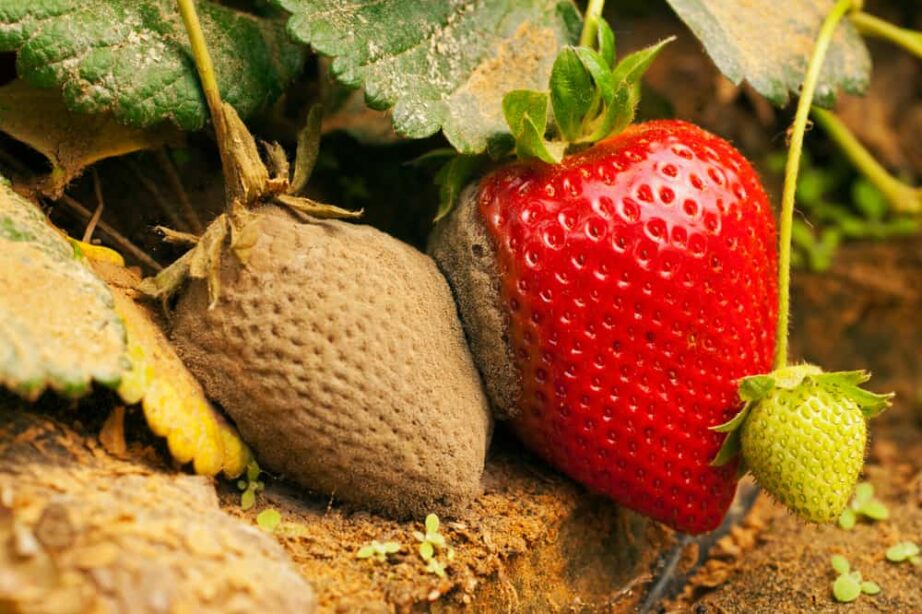
Recent Comments